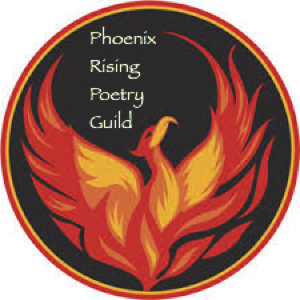WELCOME AGAIN TO THE PHOENIX RISING POETRY GUILD. We hope the experience here is a pleasant and relaxing one; a place where our hearts, and minds are set free to soar to great heights! The drafts developed here should serve you well as we polish them into precious gems of thought. I look forward to all you will present here!
***

So, to start this off, we will step right into the heart of February and explore love. I think since I began this process as we honored Dr. Martin Luther King back in January, I’d open with this quote by Dr. King which rings loudly:
“Darkness cannot drive out darkness: only light can do that. Hate cannot drive out hate: only love can do that.”
― Martin Luther King Jr., A Testament of Hope: The Essential Writings and Speeches
Love has a power all its own. It is said “Faith can move mountains”. So too can love! It surely can move hearts. And minds. Love can make us do crazy things willingly. Apparently, the cause of love is a noble fight. It has been the fodder of poets and muses for as long as we’ve been able to put words to these emotions. There are many aspects of love that we have experienced or have put an expression to.
“Love is of all passions the strongest, for it attacks simultaneously the head, the heart and the senses.” ~Lao Tzu
We are told “love is blind”. And yet we speak of “love at first sight.”
“Sometimes the heart sees what is invisible to the eye.“ ~H. Jackson Brown, Jr.
We paint hearts blood red at Valentine’s Day; or purple to represent passion. So we accept these as the colors of love.
“The greater your capacity to love, the greater your capacity to feel the pain” ~Jennifer Aniston
And feel the pain of love, we do! The emotion of love encompasses all we feel. Feeling love is another aspect of which poets across the ages have found need to decipher. Whether laced with perfume or emitting pheromones, there is a certain scent associated with the process of love.
Of course:
“You must remember this, a kiss is still a kiss!“ ~Composer Herman Hupfeld
That tender sip of a kiss is most savored, and is the expression that seals the fact that something special is afoot… um, aheart! But, where does love start?
“Let us always meet each other with smile, for the smile is the beginning of love.” ~ Mother Teresa
So it can be asserted quite accurately then that love indeed attacks the senses.
We’ve mentioned the sight, feel, smell and taste of love. But consider these thoughts:
“Love is a friendship set to music.” ~ Joseph Campbell
“The sweetest of all sounds is that of the voice of the one we love.” ~Jean de la Bruyere
“Love is a single note sung by two hearts.” ~Some unknown poet from Buffalo
“The first duty of love is to listen.“ ~ Paul Tillich
and conversely
“True love comes quietly, without banners or flashing lights. If you hear bells… get your ears checked.” Author Erich Segal
One last quotation on love:
“Love is the poetry of the senses“ ~ Honore de Balzac
Certainly, it always comes back to poetry! That is after all, why we’re here! So, that brings us to our cause for the month: The Sound of Love.
What is the timber of a kiss? What is the sound of an embrace? What cacophony resides in a broken heart? What does that voice inside your head say when you fall in love?
Explore the SOUND of love.
We will begin here. Concentrate your poetry on this concept using free or open verse, or any form which serves this process. A love sonnet comes easily to mind. Then, in the next few weeks, we will explore the Sound of Love in different ways, not so much with form, but using the various devices we like to apply in our poetic pursuits.
Enjoy writing and reading this month. Encourage and support each other. Have fun doing it! Make the “Guild” a place where poetry (and you) arise!

